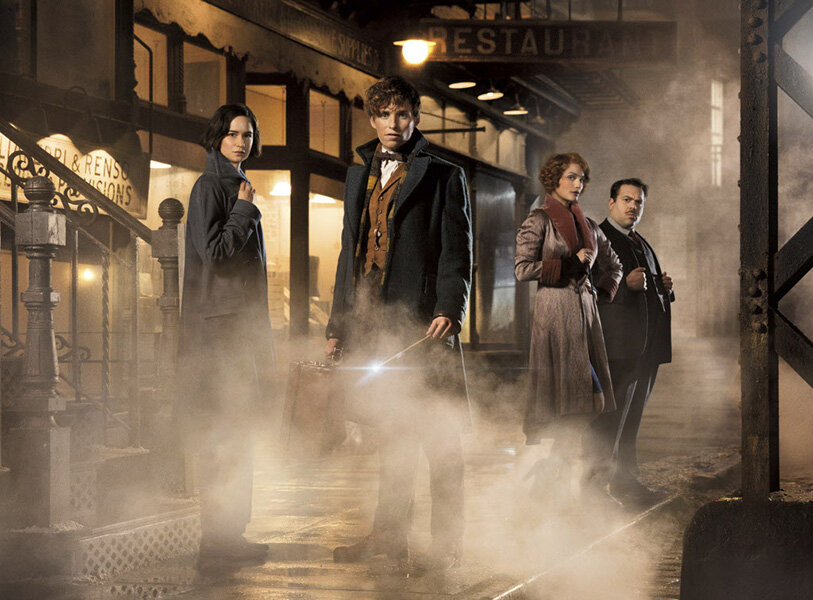Five 'Fantastic Beasts' films, says J.K. Rowling – is there a magic number?
Loading...
Five is the new magic number, as author J.K. Rowling has announced that the plan is for the upcoming “Harry Potter” spin-off movie series “Fantastic Beasts and Where to Find Them” to consist of five films.
“We’re pretty sure it’s going to be five movies,” Ms. Rowling said at a fan event in London, according to Reuters.
The first movie, “Fantastic Beasts and Where to Find Them,” will be released this November and stars Eddie Redmayne as Newt Scamander, an expert on magical creatures who travels to America. The story is based on the book of the same name, which was written by Rowling and styled as a textbook, written by Newt, for students at Hogwarts.
The film will co-star Katherine Waterston, Ezra Miller, and Colin Farrell, among others.
How many movies is best for a successful film series? Is more better, or do moviegoers get tired of the series if it goes on for too long?
Trilogies have long been a popular form of adaptation. Part of this may be that trilogies are popular in fantasy and science fiction, which recently have served as the basis for such successful film series as “The Lord of the Rings.”
And it’s caught on in film series that weren’t based on a book. The “Star Wars” film series first presented itself in three parts and has mostly stuck to that structure, with Disney planning two more movies to follow the 2015 hit “Star Wars: The Force Awakens” (not counting spin-offs – more on the "cinematic universe" model later).
Recent successful film series like the “Dark Knight” movies also chose a three-part storytelling method.
This formula has been slightly tweaked in recent years with the “split the last book in half” method of adapting successful series for the screen, however. The “Potter” series split the final and seventh book in the series into two movies, and other recent literary adaptations followed suit, such as the “Hunger Games” movies.
And the currently popular notion of the cinematic universe has broken down the linear series idea somewhat as well. Are there trilogies in Marvel movies? Well, kind of – three “Iron Man” movies were released. But because Marvel films follow different characters, there are some movies that bring them all together, like 2012’s “The Avengers,” and others that center on one particular character, like the “Captain America” series, of which there were three. Technically there have been 13 Marvel movies, but no one would call those films a “Marvel series.”
Is there a specific numeric rule for making a more successful movie series? If there was, every Hollywood executive would of course be adhering to it. But there may be some lessons to be learned from the highest-grossing film series of all time.
The most successful movie series of all time are of course those who have released the most installments – that’s simple math. James Bond reached 24 installments with the 2015 movie “Spectre” and is one of the most domestically successful franchises of all time, without adjusting for inflation.
But not adding “2” and “3” to the end of your titles may help a franchise. The Marvel films are the most successful franchise of all time domestically, without adjusting for inflation, and because Marvel movies aren’t labeled, for example, “Captain America 3” or “Thor 2,” that may stave off audience fatigue. Many moviegoers probably wouldn’t have been able to name off the top of their head that “Captain America: Civil War” was the thirteenth, for example. And Marvel shows no sign of slowing down.
Fatigue may also be avoided by taking breaks to build up audience anticipation. The “Star Wars” series, which is only beaten by Marvel when it comes to all-time domestic franchise gross without adjusting for inflation, took at least 10 years off in between the start of each trilogy. This was a strategy also used by the movies based off J.R.R. Tolkien material, with a nine-year gap between the conclusion of “Lord of the Rings” and the debut of the “Hobbit” film series, and the “Batman” film series, which had a lull of eight years between “Batman & Robin” and the debut of the Christopher Nolan "Dark Knight" film series, “Batman Begins.”






